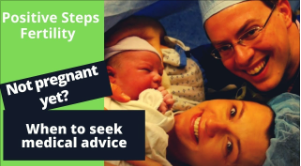When you’re struggling to get pregnant, it’s natural to explore every possible avenue that might help you conceive. Questions about sexual positions often come up, especially when the journey to parenthood feels uncertain or frustrating. Does it really matter what sexual position you use? Can something so simple as a sexual position improve your chances? Let’s explore the science, bust some myths, and focus on what makes a difference.
The Science Behind Conception: How Sperm Meets Egg
Conception happens when sperm meets egg, and while that process seems straightforward, there are many factors at play. Timing intercourse with ovulation is by far the most critical factor. Healthy sperm must be present when an egg is released, as the egg only remains viable for fertilization for about 12 to 24 hours.
So where do sexual positions fit into all of this? Despite many theories over the years, there’s no strong scientific evidence to suggest that any specific position improves your chances of getting pregnant. Sperm are remarkably efficient swimmers, and once they’re deposited in the vagina, they’re designed to make their way toward the egg regardless of position.
How Sperm Travels and Why Sexual Position Doesn’t Impact Fertility
Once sperm is ejaculated into the vagina, the process of conception begins almost immediately. Sperm are equipped with tails, called flagella, that allow them to propel themselves forward. They are aided by the natural contractions of the uterus and fallopian tubes, which help guide them toward the egg.
The vagina’s environment, while acidic, is designed to support sperm for a limited time. Cervical mucus, especially during ovulation, becomes more hospitable and helps sperm survive and move through the cervix into the uterus. From there, sperm travel up the fallopian tubes in search of the egg.
Scientific studies, including those referenced by the American Society for Reproductive Medicine (ASRM), have shown that sperm can reach the fallopian tubes within minutes of ejaculation, regardless of sexual position. Gravity has little to no impact on their movement, as sperm are highly motile and aided by the body’s natural processes. This is why positions that aim to “angle” the sperm upward don’t significantly change the likelihood of conception.
Debunking Myths: Does Deep Penetration Help You Get Pregnant?
It’s true that positions like missionary or doggy style are often cited as “ideal” for conception because they allow for deep penetration. The idea is that they position sperm closer to the cervix, potentially increasing the chances of fertilization. However, scientific research doesn’t support this claim. Sperm are highly efficient swimmers and, once inside the vagina, rely more on their mobility and the body’s natural processes than on their starting position. What truly matters is timing intercourse around ovulation and maintaining a healthy reproductive system. While these positions can be comfortable and help couples feel confident, rest assured that conception is possible in any position.
Myths vs. Facts About Sexual Position and Fertility
One of the most persistent myths is that certain sexual positions, like missionary, give sperm a “better chance” of reaching the egg. Another common belief is that lying still after intercourse helps sperm travel more effectively. The truth? Sperm are capable of beginning their journey toward the fallopian tubes almost immediately after ejaculation, and gravity or specific sexual positions don’t significantly impact their ability to get where they need to go.
Trusted sources like the American Society for Reproductive Medicine (ASRM) confirm that there is no conclusive evidence linking sexual positions to increased chances of conception. According to ASRM, factors such as timing, ovulation, and overall reproductive health play a much larger role in achieving pregnancy.
What Really Matters: Tips for Maximizing Your Chances of Pregnancy Naturally
Instead of focusing on sexual positions, here are the things that truly make a difference:
Tips for Maximizing Chances of Pregnancy Naturally
- Track Your Fertile Window: The fertile window—the six days leading up to and including ovulation—is the best time to try to conceive. Use ovulation predictor kits, track basal body temperature, or monitor cervical mucus to identify your most fertile days.
- Have Regular Intercourse: Aim to have sex every one to two days during your fertile window to ensure there’s a steady supply of viable sperm.
- Focus on Reproductive Health: Maintain a balanced diet, exercise regularly, and avoid smoking or excessive alcohol. For women, address any underlying health issues like polycystic ovary syndrome (PCOS) or endometriosis. For men, take steps to improve sperm quality by avoiding heat exposure and maintaining overall health.
- Reduce Stress: Stress can disrupt hormonal balance, so find relaxation techniques like mindfulness, yoga, or hobbies that help you unwind.
- Optimize Timing: Studies show that intercourse two days before ovulation offers the highest chance of conception, as sperm can survive in the reproductive tract for up to five days.
The Fertile Window: Understanding Your Most Fertile Days
As covered by the American Society of Reproductive Medicine, the ‘‘fertile window’’ is best defined as the 6-day interval ending on the day of ovulation. At least in theory, the viability of both oocytes and sperm should be maximal during that time. In a study of 221 presumed fertile women, peak fecundability was observed when intercourse occurred within 2 days before ovulation. In another family planning study, the investigators combined data obtained from two cohorts, one using basal body temperature monitoring and the other using analysis of urinary estrogen and progesterone metabolites, to determine the likely time of ovulation. The likelihood of pregnancy was greatest when intercourse occurred the day before ovulation and started to decline when intercourse occurred on the day of ovulation.
- The ‘‘fertile window’’ spans the 6-day interval ending on the day of ovulation. Frequent intercourse (every 1–2 days) during the fertile window yields the highest pregnancy rates, but results achieved with less frequent intercourse (2–3 times per week) are nearly equivalent. Couples should not be advised to limit the frequency of intercourse when trying to achieve pregnancy.
Maintaining Reproductive Health to Improve Fertility
Maintaining good health is essential for both partners. For women, this includes regular checkups, a balanced diet, and managing conditions like polycystic ovary syndrome (PCOS) or endometriosis. For men, it’s important to avoid factors that can affect sperm quality, like smoking, excessive alcohol consumption, or prolonged heat exposure.
How Often Should You Have Intercourse When Trying to Conceive?
Having sex every one to two days during the fertile window ensures a steady supply of viable sperm. Overthinking the process or trying to “save up” sperm can sometimes lead to unnecessary stress, so focus on maintaining a regular and relaxed approach.
Stress and Fertility: Why Relaxation Matters
Stress can impact hormonal balance, so finding ways to relax and enjoy the process can be helpful. Research shows that stress reduction techniques, such as mindfulness or yoga, may support overall fertility health.
A Reassuring Perspective for Women Trying to Conceive
The journey to parenthood can be challenging, and it’s easy to get caught up in the details. While it’s tempting to think there’s a “magic position” that will make all the difference, the reality is that conception depends on many factors working together. If you’ve been trying for a while without success, don’t hesitate to seek guidance from a specialist. Sometimes, a simple adjustment to your approach or identifying an underlying issue can make all the difference.
Don’t Suffer in Silence: Get Answers
At Positive Steps Fertility, we’re here to provide clarity and support as you navigate this journey. If you’re feeling frustrated or unsure about your next steps, let us help. Together, we can identify what’s truly impacting your ability to conceive and develop a plan to address it. Remember, there’s no need to go through this alone. Reach out to us today and take the next positive step forward.




